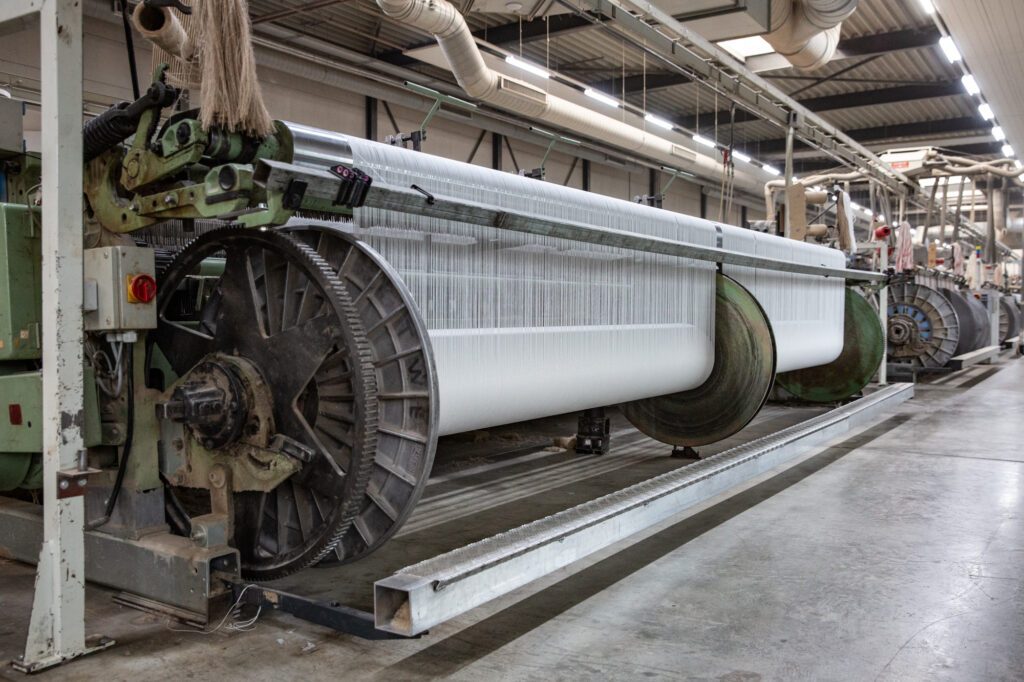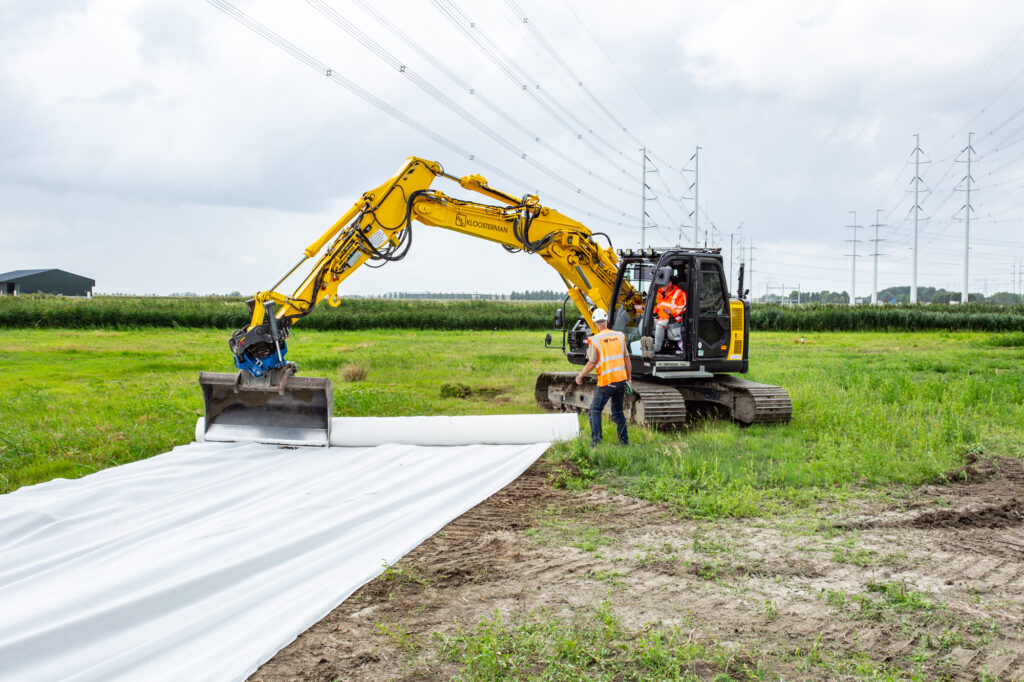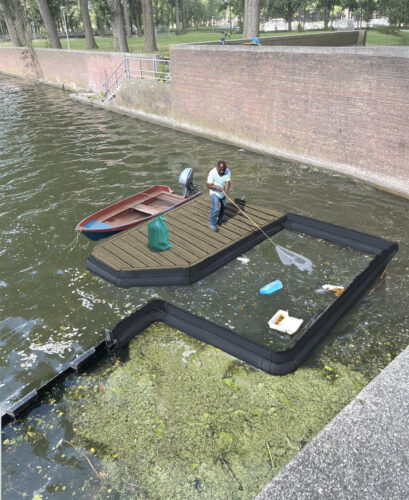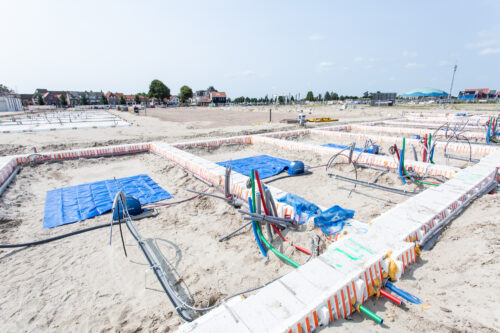News
5 August 2025
From waste to solution: natural geotextile to make construction sites more sustainable

In conversation with Richard Hubregtse (BAM) and Marco Hazenkamp (Joosten Groep).
What if the material we use to build temporary construction roads could simply be left behind afterward—without harming the soil, without creating waste, and without emissions? That question marked the beginning of a journey that led to a unique pilot project using Jogetex HV, a geotextile made from wood fibers. On July 8, 2025, we launched a field trial together with developer Joosten Groep at TenneT’s high-voltage substation in Rilland.
The challenge of temporary constructions
“In construction, we typically use geotextile for temporary work roads,” says Richard Hubregtse, Project Manager at BAM Infra Nederland. “It’s a synthetic material we lay beneath the foundation layers to prevent sand and soil from mixing.”
These textiles have a lifespan of 100 years. Yet we use them only briefly, due to the temporary nature of the structures. After use, we try to shake them clean, wash them, and recycle them. But this is quite a labor-intensive process, and often the textiles don’t get clean enough—meaning we have to dispose of them. It’s a shame, because we’re only using a small fraction of their intended lifespan. That’s why we started looking for an alternative that aligns with our sustainability goals.
Wood fibers as a solution
The search for an alternative led BAM to Joosten Groep, a supplier of products and solutions for the infrastructure sector. “At Joosten Groep, we’ve been active in the geotextile market for quite some time and are familiar with the requirements these products need to meet,” says Marco Hazenkamp, Technical Specialist at Joosten Groep. “So when BAM approached us with their search for a biobased geotextile, we immediately saw a great opportunity.”
After a year of intensive research into 100% natural and compostable raw materials, Joosten found the answer in a wood fiber sourced from FSC-certified European forests. “The wood chips are turned into pulp, the pulp into fibers, and the fibers into yarn, which is then woven into the textile,” Marco explains. “The result is a fully compostable geotextile, which we’ve named Jogetex HV.”

Photo production Jogetex HV
Pilot testing in practice
At TenneT’s high-voltage substation in Rilland, we are installing two test sections of 500 m² each. “We’re testing two variants of the fabric—one with a finer structure and one with a coarser structure—on different soil types: sand, clay, and grass. We’re placing various foundation materials and steel road plates on top, just like on a real construction site,” explains Richard.
Over the course of a year, the fabric will be excavated and analyzed at regular intervals. “Every three months, samples are taken and tested to determine the actual functional lifespan of Jogetex HV,” adds Marco.
Paradoxically, Joosten Groep is actually hoping to see a decline in the physical properties of the material early on. “The best-case scenario is that Jogetex HV composts quickly. It’s easier to extend the lifespan than to shorten it,” Marco explains.
The key lies in lignin, a natural compound that determines the durability of wood. Wood types naturally high in lignin compost significantly more slowly than those with low lignin content. By adding lignin during the production of Jogetex HV, Joosten Groep may be able to better control how long the geotextile remains functional in the soil. Shortening its lifespan, however, is a different challenge. That depends more on the environmental conditions where the textile is used—conditions that are more complex to influence than the product itself.
Power of collaboration
“What makes this pilot unique is the collaboration,” says Richard. “We at BAM brought in the need and are conducting the test. Joosten developed the material and contributes technical and ecological expertise. And TenneT has made the site available. Without that space, this wouldn’t have been possible.”
It’s a great example of how innovation happens—not alone, but together. Richard concludes: “We all share the same goal: to build more sustainably. And that only works if you combine each other’s knowledge and strengths.”

Photo pilot project in Rilland
Scaling up and making an impact
If the pilot proves successful, the partners aim to scale up the use of the material. “For example, on the Zuid-West 380 kV East project, where we’re working on a new high-voltage connection between Rilland and Tilburg,” says Richard. “We’re already applying circular principles there, like reusing sand. This would fit in perfectly.”
“After this testing phase, Joosten Groep will continue developing a biobased product line tailored to the needs of various stakeholders,” Marco confirms. “And beyond that, this product could be used in many other types of temporary construction. It’s definitely worth exploring.”
And if it doesn’t work out? “Then we’ve still learned something,” says Richard. “Maybe we need to adjust the material or try a different variant. But the fact that we’re willing to take this step says everything about how we want to build.”
Details make the difference
It might seem like a small detail—a piece of fabric beneath a construction road—but the impact is significant. “If we get this right, we save on waste, emissions, and labor,” says Richard. “And we leave the soil in better condition than we found it. That’s what it’s all about.”
Marco adds: “Jogetex HV could very well be the next milestone—not just in how we build, but in how we think about the life cycle of our building materials. We’re shifting from ‘dispose or recycle after use’ to ‘return to nature.’ That’s a fundamental change.”
Meer nieuws

13 November 2025
Joosten is participating in the 2026 World Cup
Joosten has landed a special assignment: we are going to provide the perfect pitches for the 2026 Fo

12 November 2025
Rethinking the Shoreliner
For his graduation research at Wageningen University & Research, student Mike Cleintuar followed the

8 October 2025
JustNimbus: finalist for the Cobouw Innovation Award
Every year, the Cobouw Awards are presented. Their purpose is to reward inspiring frontrunners and s